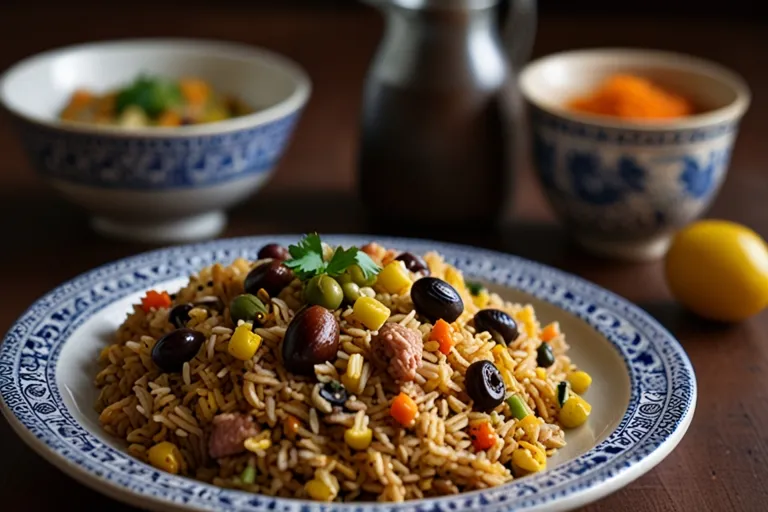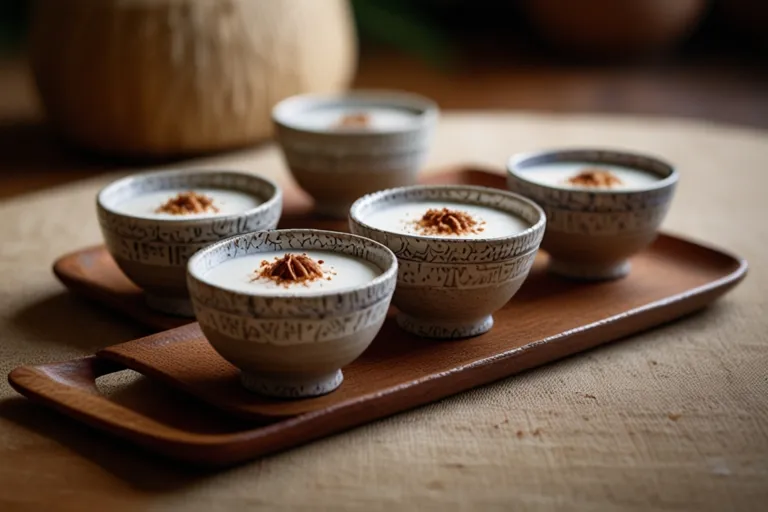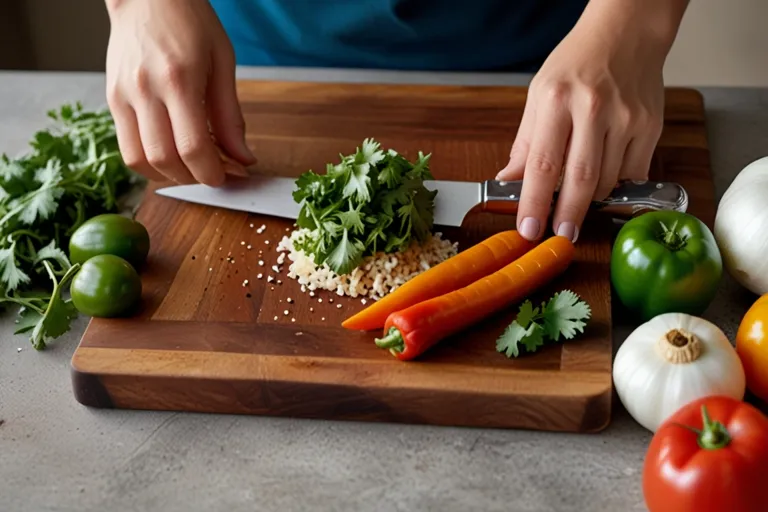Okay, so you’re looking to whip up some seriously tasty food, huh? Well, get ready to dig in because we’re about to dive headfirst into the amazing world of puerto rican recipes! From savory stews that’ll warm you right up to sweet treats that’ll have you saying “¡Delicioso!”, Puerto Rican cooking is all about big flavors and even bigger heart. This article is gonna be your guide to some of the most iconic dishes, the secret ingredients that make them special, and even some tips to make cooking them a breeze. So grab your apron, and let’s get cooking!
What Makes Puerto Rican Food So Special?
Honestly, thinking about puerto rican recipes makes me think of sunshine and good times. The food is just bursting with flavor, you know? It’s like a party in your mouth!
A Blend of Cultures on Your Plate
Puerto Rican cuisine is this awesome mix of different cultures, kind of like a delicious melting pot. You’ve got influences from the Spanish, the African, and the indigenous Taíno people. This blend creates dishes that are totally unique and seriously satisfying. It’s more than just food; it’s a taste of the island life.
Introduction to the Vibrant World of Puerto Rican Cuisine
A Taste of Paradise: Setting the Stage for Puerto Rican Food
So, where does all that amazing flavor come from? Well, those Spanish folks brought over things like rice, pork, and olives. Then, the African influence added ingredients like plantains and yams, which are super popular in puerto rican recipes. And let’s not forget the Taíno people, who were already using things like corn, beans, and peppers. It’s this mix of ingredients and cooking styles that makes Puerto Rican food so special and gives each dish its own unique story.
The Sofrito Foundation: The Heart of Puerto Rican Cooking
If there’s one thing you gotta know about puerto rican recipes, it’s sofrito. This isn’t just some random mix of veggies; it’s the flavor base for a ton of dishes! Think of it like the secret weapon that makes everything taste extra good. Sofrito is usually made with things like onions, peppers, garlic, and cilantro, all chopped up and cooked together. Honestly, once you smell sofrito cooking, you’ll know you’re in for a treat. It’s the real MVP of Puerto Rican cooking, you know?
Savoring the Classics: Must-Try Puerto Rican Recipes
Arroz con Gandules: The Iconic Puerto Rican Rice Dish
Okay, first up, we’ve gotta talk about arroz con gandules. Seriously, this dish is like the king of puerto rican recipes. It’s rice cooked with pigeon peas (gandules), pork, and of course, that awesome sofrito. Honestly, if you go to any Puerto Rican party or family gathering, you’re gonna find arroz con gandules.
Ingredients for Perfect Arroz con Gandules

To make this magic happen, you’ll need rice, pigeon peas (usually canned is fine!), some kind of pork (like salted pork or ham), sofrito (you can buy it or make your own), sazón (for that signature color and flavor!), and some olives or capers for a little zing. It’s not a super long list, but each ingredient plays a big part.
Step-by-Step Guide to Authentic Preparation
First, you gotta cook the pork to get some of that flavor going. Then, you sauté your sofrito – that smell is just the best! After that, you toss in the rice, pigeon peas, and all the seasonings. Add water or broth, bring it to a boil, and then let it simmer until the rice is fluffy. It’s pretty straightforward, even if you’re not a pro in the kitchen.
Tips for Achieving Fluffy and Flavorful Rice
The key to perfect arroz con gandules is not messing with it too much while it’s cooking. Let it steam in peace! Also, using good quality broth instead of just water can really kick up the flavor. And hey, a little extra sazón never hurt anybody!
Mofongo Magic: Mastering the Art of Plantain Power
Next up, get ready for mofongo! This is another super popular dish in puerto rican recipes, and it’s all about plantains. Green plantains, to be exact. Basically, you fry them up, then mash them with garlic, pork cracklings (chicharrón), and broth. It sounds simple, but the taste? Amazing. While we’re on the topic of delicious carb-based dishes, mofongo is definitely a step above your average chicken flatbread in terms of unique cultural flavor, you know?
Different Ways to Prepare Mofongo
You can keep it simple with just the mashed plantains, garlic, and chicharrón, or you can stuff it with all sorts of things! Shrimp, chicken, or even more pork are all great options. It’s a pretty versatile dish, honestly.
The Key to Perfectly Fried Plantains
The trick to good mofongo is frying the plantains twice. You fry them once until they’re a little soft, then you smash them, and then you fry them again to get them nice and crispy on the outside. This double-fry method is what gives mofongo its awesome texture.
Serving Suggestions and Variations
Usually, mofongo is served with some kind of flavorful broth or sauce on the side. Like I said, you can also stuff it! Think of it like a savory plantain bowl. It’s hearty, it’s flavorful, and it’s definitely a taste of Puerto Rico.
Exploring Authentic Puerto Rican Recipes: Main Courses
Pernil Perfection: Slow-Roasted Pork Shoulder, a Puerto Rican Staple (H3)
Alright, let’s talk about pernil. This is the dish for special occasions in Puerto Rico. We’re talking slow-roasted pork shoulder that’s been marinated in all sorts of deliciousness. The skin gets super crispy, and the meat inside is just fall-apart tender. Seriously, it’s pork perfection.
The Secret Marinade for Unforgettable Pernil
The magic of pernil is all in the adobo. You gotta season that pork generously with a mix of garlic, oregano, salt, pepper, and sometimes a little bit of sour orange juice or vinegar. Letting it marinate overnight (or even longer!) is key to getting that deep, savory flavor.
Achieving Crispy Skin and Tender Meat
The secret to that amazing crispy skin? High heat at the end! You cook it low and slow for most of the time to get the meat tender, and then you crank up the heat for the last little bit to get that crackling skin. It’s a game-changer, trust me.
Serving Pernil for Festive Occasions
Pernil is a star at any Puerto Rican party, especially around the holidays. You’ll usually find it served with arroz con gandules, of course, and maybe some tostones or a fresh salad. It’s a real crowd-pleaser.
Pollo Guisado: A Comforting Puerto Rican Chicken Stew
Now, for something a little more everyday but just as tasty: pollo guisado. This is a classic Puerto Rican chicken stew that’s just packed with flavor. It’s like a warm hug in a bowl, you know?
Building Layers of Flavor in Pollo Guisado
Like a lot of puerto rican recipes, it all starts with that sofrito. Then you brown the chicken, add in things like potatoes, carrots, olives, and some tomato sauce. Let it simmer for a while, and the flavors all come together beautifully.
Essential Vegetables for a Hearty Stew
Potatoes and carrots are pretty standard in pollo guisado, but you can also throw in other veggies you like. Some people add green beans or even squash. It’s really up to you!
Variations and Regional Twists
Every family has their own little spin on pollo guisado. Some people add a little bit of wine, others might use different types of peppers. That’s the cool thing about puerto rican recipes; there’s always room for your own touch.
Carne Guisada: Savory Puerto Rican Beef Stew
Last but not least in this part, we have carne guisada. If you like beef, you’re gonna love this. It’s a hearty and savory Puerto Rican beef stew that’s just perfect for a cozy night in.
Choosing the Right Cut of Beef for Carne Guisada
For carne guisada, you want a cut of beef that will get nice and tender when it’s cooked low and slow. Chuck roast is a great option.
Achieving a Rich and Flavorful Broth
Again, starting with that sofrito is key. Then you brown the beef, add in some tomato sauce, beef broth, and seasonings. Letting it simmer for a good long while is what makes the broth so rich and flavorful.
Serving Suggestions and Complementary Dishes
Carne guisada is awesome served over white rice or with some crusty bread to soak up all that delicious sauce. It’s a stick-to-your-ribs kind of meal that’s just so satisfying.
Delving into Delicious Puerto Rican Side Dishes
Tostones Temptation: Perfectly Fried Plantain Slices
Alright, you’ve got your main dish sorted, but what about the sides? Enter tostones! These are basically smashed and fried green plantains, and honestly, they’re addictive. They’re crispy on the outside, soft on the inside, and perfect for dipping. You know, sometimes I just crave a plate of tostones all by themselves!
The Double-Fry Technique for Crispy Tostones
Just like with mofongo, the double fry is the secret to great tostones. You slice the green plantains into thick rounds and fry them once until they’re a little soft. Then, you smash them flat (a tostonera is handy for this, but a couple of plates works too!) and fry them again until they’re golden brown and super crispy. Seriously, that second fry makes all the difference.
Serving Tostones with Various Dips and Sauces
Tostones are awesome on their own with a little salt, but they’re even better with dips! Think mojo (a garlicky citrus sauce), mayoketchup (a mix of mayo and ketchup, surprisingly good!), or even just some hot sauce. They’re also great alongside dishes like pernil or pollo guisado, soaking up all those flavorful juices. For more ideas on tasty side dishes, you might want to check out our recipe article on [Hypothetical Link to “Top 10 Latin American Side Dishes” or similar].
Habichuelas Guisadas: Flavorful Puerto Rican Beans
No proper Puerto Rican meal is complete without habichuelas guisadas, or stewed beans. These aren’t just any beans, though. They’re simmered with sofrito, ham or bacon, and a bunch of other yummy seasonings. They’re hearty, comforting, and a staple at almost every table.
Different Types of Beans Used in Habichuelas
You can use different kinds of beans for habichuelas guisadas. Pink beans are pretty common, but red kidney beans or even white beans work well too. It really depends on your preference!
Seasoning Secrets for Delicious Beans
Besides the sofrito, things like sazón, oregano, and a bay leaf really bring the flavor to these beans. And that little bit of ham or bacon adds a nice smoky touch. They’re slow-cooked to perfection, letting all those flavors meld together.
Ensalada de Papa: Creamy Puerto Rican Potato Salad
Sometimes you want something a little cooler and creamier on the side, and that’s where ensalada de papa comes in. This Puerto Rican potato salad is a classic! It’s got potatoes, mayo, onions, peppers, and sometimes eggs. It’s simple, but it’s a crowd-pleaser. It’s definitely a different vibe than a BBQ chicken flatbread, but sometimes you need that creamy coolness, you know?
Key Ingredients for an Authentic Ensalada de Papa
Besides the potatoes and mayo, you’ll usually find diced onions, bell peppers (often pimientos), and sometimes hard-boiled eggs in a good ensalada de papa. Some people also add a little mustard or vinegar for a bit of tang.
Tips for Achieving the Perfect Creamy Texture
The key to a good ensalada de papa is not overcooking the potatoes. You want them to be tender but still hold their shape. Also, letting it chill in the fridge for a while before serving really helps the flavors come together and gives it that perfect creamy texture.
Sweet Endings: Indulging in Puerto Rican Desserts
Arroz con Leche: Creamy Puerto Rican Rice Pudding
Time for something sweet! Arroz con leche is a classic Puerto Rican rice pudding, and it’s seriously comforting. It’s made with rice, milk, sugar, cinnamon, and sometimes a little lemon peel or vanilla. It’s creamy, sweet, and just hits the spot.
Achieving the Perfect Consistency in Arroz con Leche
The secret to perfect arroz con leche is cooking it low and slow and stirring it frequently. You want the rice to be cooked through and the pudding to be nice and creamy, but not too thick or too runny. It’s a bit of a balancing act, but totally worth it.
Flavor Variations and Garnishes
While cinnamon is a must for arroz con leche, you can also add other flavorings like lemon zest, vanilla extract, or even a splash of rum for a grown-up version! A sprinkle of cinnamon on top before serving is the perfect finishing touch.
Tembleque: The Classic Puerto Rican Coconut Pudding

If you love coconut, you have to try tembleque. This is a simple but delicious Puerto Rican coconut pudding. It’s made with coconut milk, sugar, and cornstarch, and it has this wonderfully smooth and jiggly texture. It’s light, refreshing, and the perfect way to end a flavorful meal.
The Simple Ingredients for Authentic Tembleque
All you need for tembleque is coconut milk, sugar, cornstarch, and a pinch of salt. That’s it! It’s amazing how such simple ingredients can create something so delicious.
Tips for a Smooth and Silky Texture
The key to smooth tembleque is to whisk the cornstarch with a little bit of the coconut milk before adding it to the pot. This prevents lumps from forming. Also, make sure to cook it over medium heat and stir constantly until it thickens. Then, pour it into molds and let it chill until it’s firm. A little sprinkle of cinnamon on top is the traditional way to serve it.
Essential Ingredients for Authentic Puerto Rican Recipes
Adobo and Sazón: The Cornerstones of Puerto Rican Flavor
If you’re gonna get serious about making puerto rican recipes, you absolutely gotta know about adobo and sazón. Think of these as your flavor superheroes! Adobo is usually a mix of garlic powder, onion powder, oregano, salt, and pepper. You can buy it pre-made, but some folks like to mix their own. Sazón is another seasoning blend that often includes annatto (for that nice orange-red color), coriander, cumin, and garlic. Honestly, these two are key to getting that authentic Puerto Rican taste.
Plantains: From Green to Ripe, A Culinary Chameleon
Plantains are like the workhorse of puerto rican recipes. Seriously, you can do so much with them! Green plantains are starchy and perfect for savory dishes like tostones and mofongo. As they ripen and turn yellow, they get sweeter and are great for things like plátanos maduros (sweet fried plantains). They’re incredibly versatile, you know?
Recaito: The Green Aromatic Base
While sofrito gets a lot of the spotlight, don’t forget about recaito! Think of it as sofrito‘s green cousin. It’s made with culantro (which has a stronger flavor than cilantro), peppers (like ají dulce), onions, and garlic. Some people use it interchangeably with sofrito, or sometimes they use both! It adds a really fresh and bright flavor to puerto rican recipes.
Mastering Key Techniques in Puerto Rican Cooking
The Art of Making Sofrito: A Detailed Guide (H3)

Alright, since sofrito is so important, let’s talk about making it. Basically, you chop up onions, bell peppers (usually green), ají dulce peppers (if you can find them – they’re not spicy!), garlic, and cilantro. Then, you sauté them in some olive oil or achiote oil (for color and flavor) until they’re soft and fragrant. Seriously, your kitchen will smell amazing! You can make a big batch and freeze it in portions, so it’s ready whenever you need it for your puerto rican recipes.
Frying Plantains: Achieving Perfect Crispiness
Frying plantains, whether for tostones or mofongo, is all about that double fry. For tostones, you fry the thick slices once until they’re slightly soft, then you smash them and fry them again until they’re golden brown and crispy. For mofongo, you fry the chunks of green plantain until they’re cooked through but not too brown, then you mash them up with garlic and chicharrón. Getting that perfect crispiness takes a little practice, but once you nail it, you’re golden!

